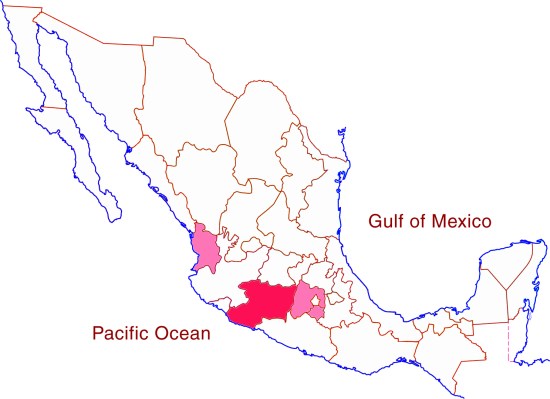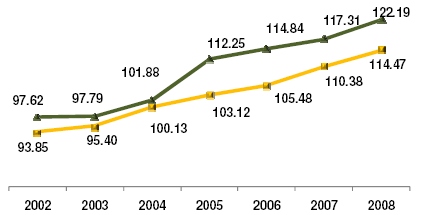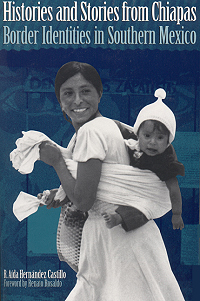The list of Mexican consulates in Canada on the website of the Mexican Embassy in Ottawa includes one massive surprise. In addition to consulates in such obvious locations as Toronto, Vancouver, Montreal and Calgary, it also includes one in the small city of Leamington in Ontario, designated to provide service to Essex County (South).
Just why is there a Mexican consulate in a city of only 31,000 people?
Leamington, established in 1890, is a small city (population 31,000) 50 km southeast of Windsor, on the shores of Lake Erie, near Point Pelee, Canada’s southernmost point. The city is a mix of different ethnic groups. From the 1920s to the 1940s, it attracted waves of German-speaking immigrants from Europe, including some German-speaking Mennonites from Russia, as well as Italians and Portuguese. In the 1950s, it became home to returning Mennonites from Mexico, whose families had lived in Canada prior to the 1920s when they had relocated to Mexico. The city reflects its ethnic diversity, with German bakeries, an Italian fountain, Tony’s Mexican tacos, and a Lebanese Club.
For the fascinating perspectives of two generations in a single family on (im)migration, settlement, and home-making in a small city in Ontario with close ties to Mexico, see Leamington, Ontario: Bloom or Bust by Tonya Davidson and Katherine Davidson.
Leamington is home to H.J. Heinz’s second largest plant in the world. The city is Canada’s greenhouse capital, with 485 ha (1200 acres) of greenhouses which yield 500 million tomatoes a year and provide several thousand jobs, many of them seasonal. Since 1974, as many as 4000 Mexican farm laborers come to Leamington for up to eight months each year to harvest the tomatoes. They are not the latest wave of permanent migrants but belong to the Seasonal Agricultural Workers’ Program. To qualify for the program workers have to be male, married, with limited education and strong family ties back home in Mexico. When seasonal work ends, they have to return home.
Their life in Canada, a mixture of opportunity and exploitation, was the subject of El Contrato: The Contract, Min Sook Lee’s 2003 National Film Board of Canada movie. El Contrato looks in detail at the lives of two migrant workers: father-of-four Teodoro Bello Martinez and “M” who wears a mask in the movie to disguise his identity.
At the time the film was made, Mexican farm workers worked “seven days a week, ten hours a day for a flat rate of $7.25 per hour, no overtime, no holidays”. A quarter of their salary is deducted for taxes, employment insurance, board and transportation, but anyone who gets sick or challenges their employer is sent back to Mexico. In the words of one of the workers in the film, “Slavery has not disappeared.” This hard-hitting film (dialogue in Spanish, with English commentary and subtitles) is a very valuable starting point for discussions about globalization, migration and many other aspects of geography.
Since the movie, several things have changed. The Mexican consulate in Leamington was opened in 2005, in response to the inability of the Mexican consulate in Toronto to keep up with the need to provide consular services to migrant workers in Leamington. The migrant workers are also now supported by several migrant agricultural support centers, including one in Leamington established by Canada’s United Food and Commercial Workers Union.






 From 1950-1970, the Mexican government opted for a modernization approach, building roads (including the Pan-American highway) and attempting to upgrade agricultural techniques. The mainstay of the regional economy is coffee. During this period, most Mam were peasant farmers, subsisting on corn and potatoes, gaining a meager income by working, at least seasonally, on coffee plantations. Working conditions were deplorable, likened in one report to “concentration camps”. Plantation owners forced many into indebtedness. The Mam refer to this period as the time of the “purple disease”:
From 1950-1970, the Mexican government opted for a modernization approach, building roads (including the Pan-American highway) and attempting to upgrade agricultural techniques. The mainstay of the regional economy is coffee. During this period, most Mam were peasant farmers, subsisting on corn and potatoes, gaining a meager income by working, at least seasonally, on coffee plantations. Working conditions were deplorable, likened in one report to “concentration camps”. Plantation owners forced many into indebtedness. The Mam refer to this period as the time of the “purple disease”: